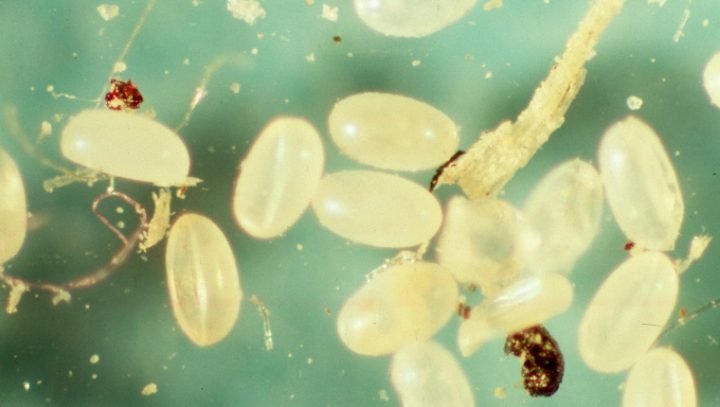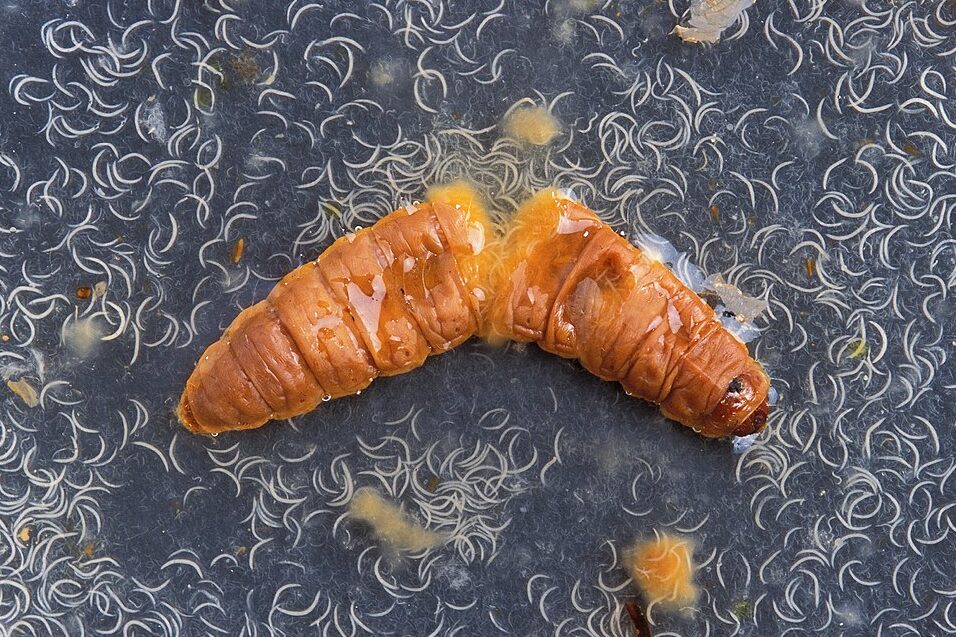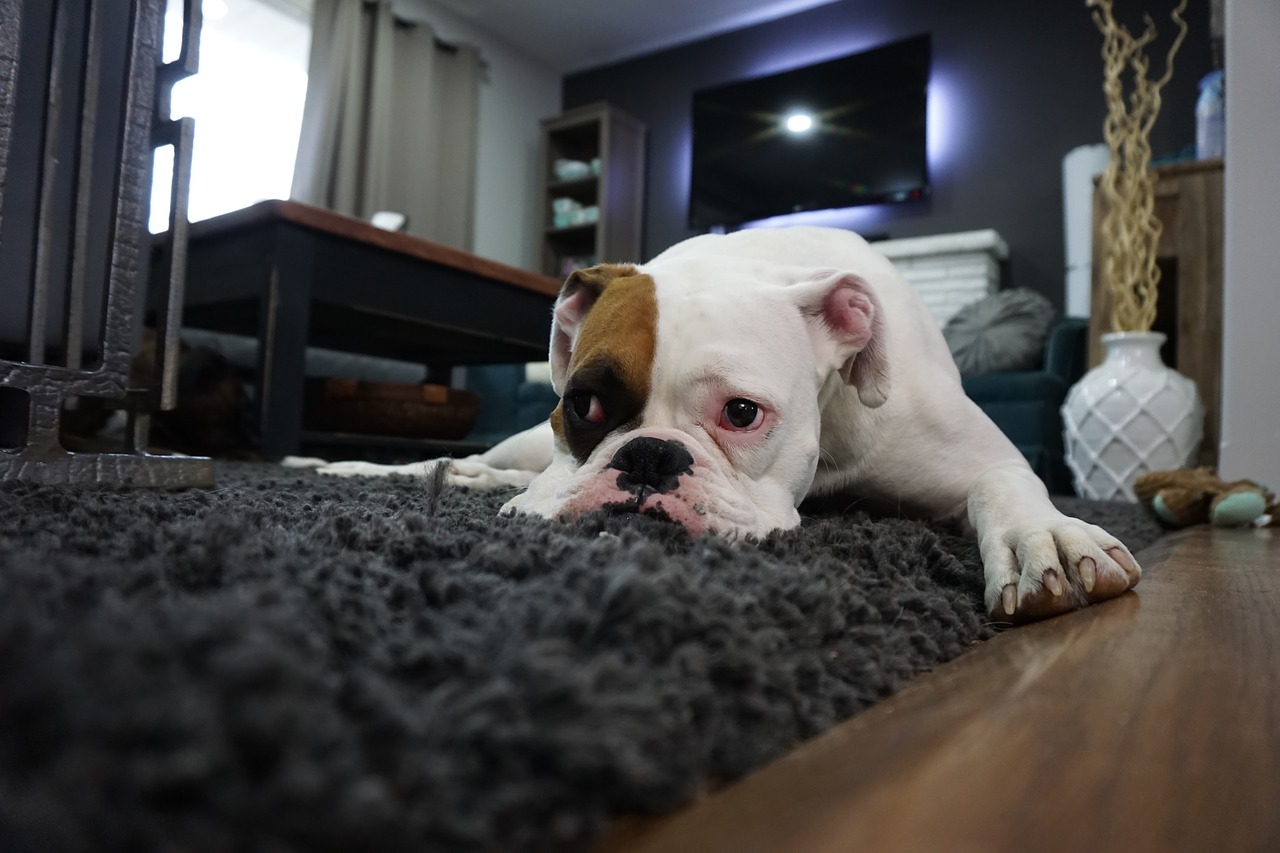Fleas are a big problem — not just for your poor dog, but also for you! Fleas bite humans too, resulting in wounds, itching, and even infections. . If that wasn’t bad enough, dog fleas are also very hard to get rid of. But why is that, exactly?
1. Fleas breed quickly
Don’t underestimate a few fleas landing on your dog. Firstly, fleas almost immediately bite and feed on their hosts. Most of them will bite your dog in the very first hour of their stay. Secondly, fleas multiply incredibly fast. Even just a few fleas can turn into severe flea infestations quickly.
A flea can lay about 40 eggs a day and up to 2,000 in its entire lifetime. Their sheer numbers alone make them formidable pests. Many times, there are just too many of them to deal with.
2. The flea life cycle makes dog fleas hard to get rid of
Dog fleas are hard to get rid of not just because of how quickly they breed, but also because of their very life cycle. The flea life cycle has four stages — egg, larva, pupa, and adult. But here’s the tricky part — many flea treatments can only deal with specific stages. For instance, some flea treatments can only kill adult fleas. And because of this, you will have to wait for the remaining eggs, larvas, and pupas to grow up into adults before you can wipe out the flea infestation.
This trickiness is one of the many reasons why you should consult a veterinarian when trying to treat fleas. Over-the-counter medications can work too, but you should read their labels properly for their effective administration.
3. Fleas can become dormant
Adult fleas don’t last long without a host. They can survive for only a few days without a blood meal, especially the females who need blood to reproduce. But fleas in other life stages are less reliant on a host. This is especially true for pupas. They can hibernate for up to nine months and only go out of hibernation once they find a prospective host like your dog.
This is one of the reasons why dog fleas are so hard to get rid of. Sometimes, you don’t even know that there are still fleas around because you don’t see any activity due to their hibernation.
4. Fleas are hard to see
Fleas are tiny creatures. The adults grow only to about an eighth of an inch. And of course, the fleas in their earlier life stages are even smaller than that. In fact, adult fleas only take up about 5% of a flea infestation. The other 95% is made up of fleas in their earlier life stages — fleas that you can’t even see. This can be a big problem because these undeveloped fleas are almost invisible to the naked eye. It’s hard to get rid of an enemy you can’t easily see.

5. Some flea treatments are more effective than others
There are so many different flea treatments out there. You have flea collars, spot-on treatments, powders, oral tablets, and even insect growth regulators. They all have their own advantages, disadvantages, and side effects. This array of pros and cons makes flea treatments complicated and fleas hard to deal with. It doesn’t help that even FDA-approved treatments have side effects.
The complexity of dealing with fleas and treatments just incentivizes going to the veterinarian even more.
6. Flea treatments can have side effects
Many flea treatments have chemicals that get rid of fleas. Of course, it’s only natural that some of these chemicals can have negative effects on your dog as well. For example, flea collars can irritate the skin of your dog, give gastrointestinal problems, and affect their cardiac system and temperature.
Remember the signs of flea treatment side effects — diarrhea, fur loss, loss of appetite, redness of the skin, vomiting, and seizures. If you see any of these signs on your dog, consult a veterinarian immediately.
7. Fleas can thrive beyond your dog
When pet lovers think of flea infestations, they mostly think about the fleas on their dogs. But this is a common mistake. This is because fleas can thrive in your home too — in your dog’s bedding, your bed, and furniture. If you are having a hard time getting rid of your dog’s fleas, it’s likely that your dog is getting infested again and again by the fleas in their surroundings.
Treating your dog
- Consult a veterinarian. Fleas will be easier to handle with the help of medical professionals. They can assist you in all the complications related to fleas and flea treatments.
- Try over-the-counter solutions. Veterinarians may give you prescription medications that are more effective than those you can buy over-the-counter. But this doesn’t mean that over-the-counter solutions are ineffective. Just read the label properly. And remember that dog treatments should not be used on cats and vice versa.
- Isolate the dog undergoing flea treatment. If you are in a household with multiple pets, separate the dog undergoing flea treatment from the others. Your other pets may play with the dog and may end up ingesting the flea treatment in one way or another, putting them at risk of side effects.
Treating your surroundings
- Wash all your dog’s belongings. Regularly wash your dog’s bedding and toys because they may have fleas in them. If you don’t, your dog may be stuck in a perpetual cycle of flea reinfestation.
- Vacuum all surfaces. Fleas can also thrive in your bed and other furniture, especially if you let your dog stay on them. This puts you and your family at risk of flea bites. Make sure to vacuum all surfaces regularly to prevent fleas from thriving all over your home.
- Treat and maintain the outside of your home. Fleas can thrive outside of your home, especially in your garden, lawn, and yard. If your dog likes to play in these areas, they may get a flea infestation. Make sure to maintain bushes and trees and keep debris away. Many homeowners also use beneficial nematodes as a natural flea deterrent.

Dog fleas are hard to get rid of
If you are having a hard time getting rid of your dog’s fleas, you are not alone. Dog fleas are hard to get rid of because of the complexity of their life cycle and how they are able to thrive throughout your home. It doesn’t help that most flea treatments can only deal with specific life stages of this cycle and many of them have side effects.
The key to winning the battle against fleas is to treat both your dog and your surroundings. If you can consult a veterinarian, the better.

